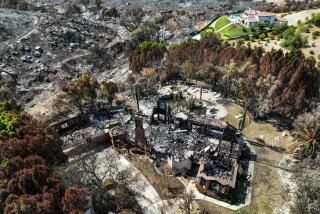Billions of dollars spent on fighting California wildfires, but little on prevention
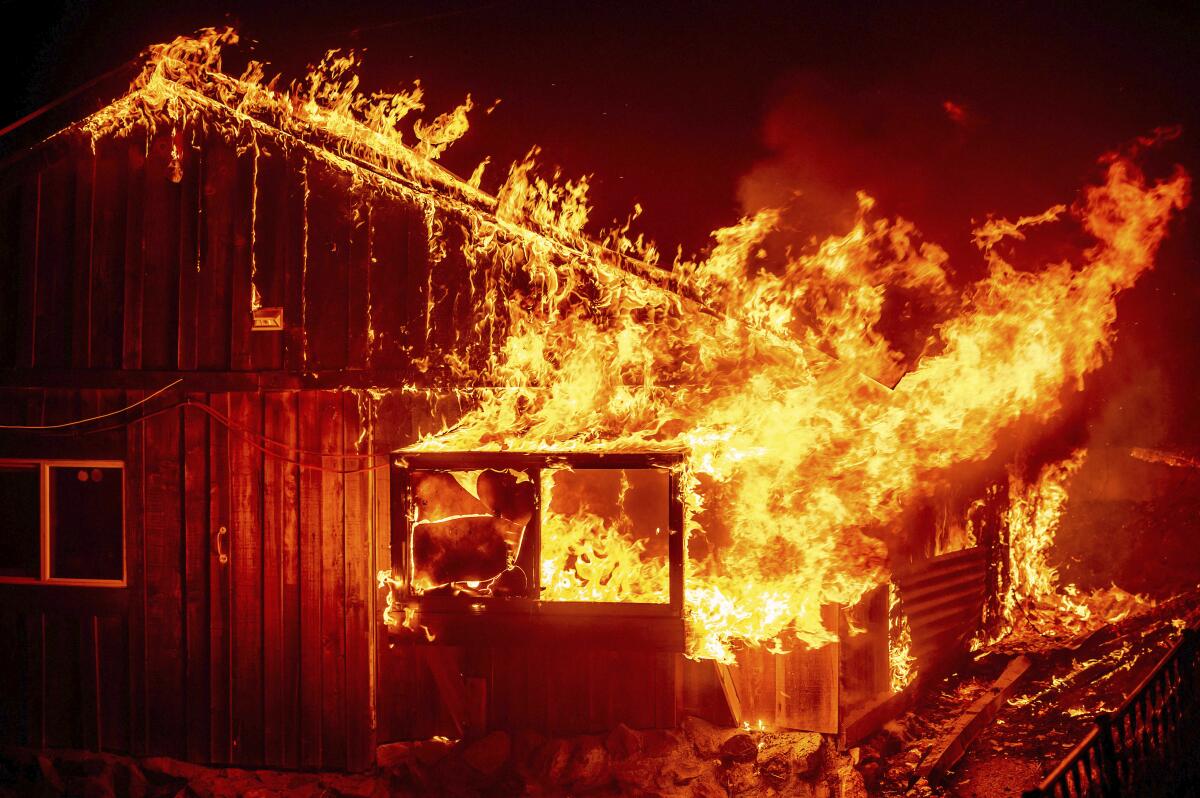
When COVID-19 blew a hole in California’s spending plans last spring, one of the things state budget-cutters took an axe to was wildfire prevention.
A $100-million pilot project to outfit older homes with fire-resistant materials was dropped. Another $165 million earmarked for community protection and wildland fuel-reduction fell to less than $10 million.
A few months later, the August siege of dry lightning turned 2020 into a record-shattering wildfire year. The state’s emergency firefighting costs are expected to hit $1.3 billion, pushing the California Department of Forestry and Fire Protection’s total spending this fiscal year to more than $3 billion.
The numbers highlight the enormous chasm between what state and federal agencies spend on firefighting and what they spend on reducing California’s wildfire hazard — a persistent gap that critics say ensures a self-perpetuating cycle of destruction.
This year’s wildfires scorched more than 4 million acres — a modern record — claimed 31 lives and damaged or destroyed more than 10,000 structures, according to Cal Fire. In early September, smoke choked much of the state, obscuring the sun and turning Bay Area skies an ominous orange.
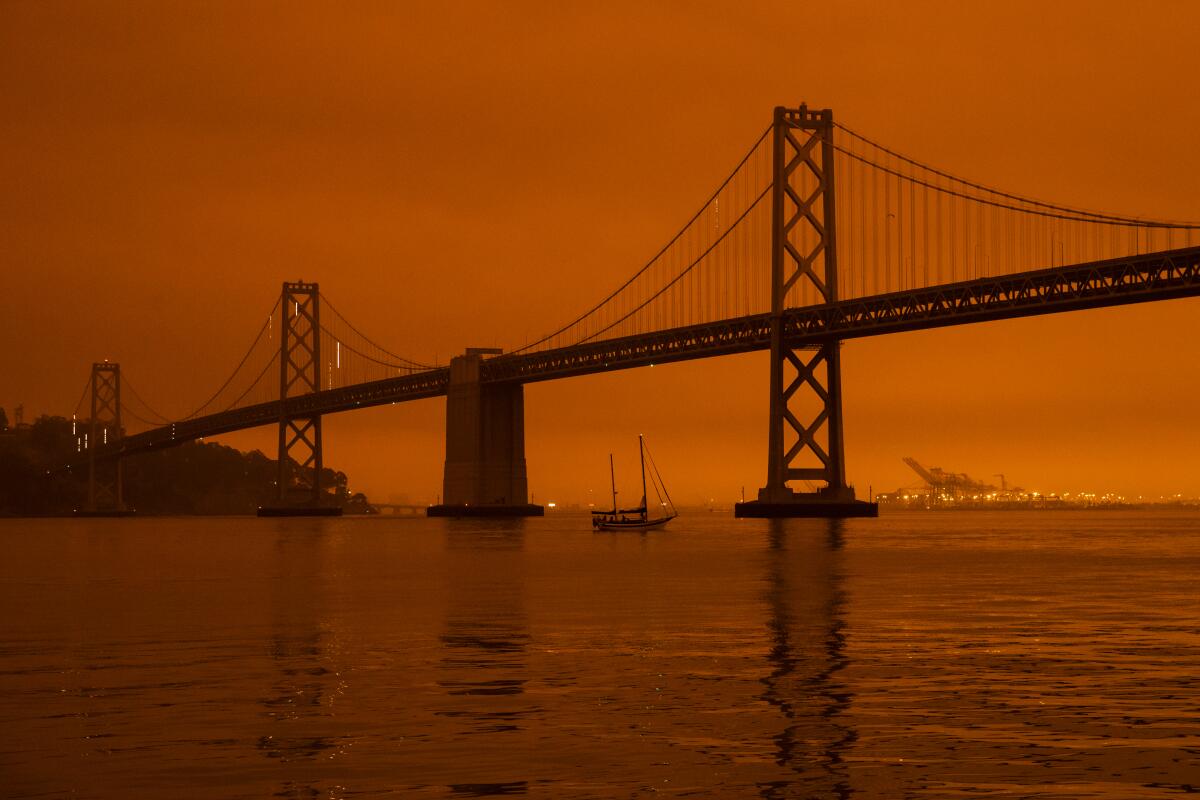
“There was a particular day where my wife said, ‘Maybe we just need to leave California,’ ” recalled Michael Wara, director of the climate and energy policy program at Stanford University’s Woods Institute for the Environment. “We are fifth-generation Californians. My great-great-great grandparents are in the ground in Colma. It’s not a place I ever want to leave.
“The system we had for managing this problem doesn’t work anymore,” he lamented. “I think the reality is, just like we need to pay for fire protection, we probably need to be paying something like that much money for fire-risk reduction in the state.”
Climate change is exacerbating California’s wildfire problem. But it didn’t create it. There are a variety of reasons why wildfires have grown larger, more intense and more destructive in recent decades. A big one, experts say, is that 40 million people live in a fire-prone landscape that has been largely deprived of flame for more than a century.
In a widely cited 2007 research paper, UC Berkeley scientists estimated that prior to 1800, about 4.5 million acres of California burned every year in fires ignited by lightning and Native Americans.
The elimination of Indigenous burning and the government’s 20th century fire-suppression policies put an end to that, producing a long-term fire deficit and fuel buildup across much of the state that Californians are now paying the price for.
At the same time, development has continually pushed into wildlands, putting ever more homes and people at risk.
Fire scientists have long called for a dramatic increase in the use of prescribed fire — that is, controlled burns that trained crews deliberately set in forests and grasslands during mild weather conditions.
They have urged federal agencies to thin more overgrown stands of young trees in the mid-elevation Sierra Nevada and let nature do some housekeeping with well-behaved lightning fires in the backcountry.
They point to the dire need to retrofit older homes to guard against the blizzard of embers that set neighborhoods ablaze in the most destructive, wind-driven fires.
Yet year after year, state and federal funding for such work remains a pittance compared to the billions of dollars spent on firefighting.
“When everybody knows what to do and they don’t do it, there’s something deeper going on,” said Wara, who helped draft a recent independent report on the costs of California wildfire that noted the state’s “long history of underinvestment in prevention and mitigation.”
The problem, he says, is largely institutional.
“You developed firefighting institutions that are very powerful, where institutional advancement for people has to do with how well you perform the firefighting mission” — not how well you reduce wildfire hazard,” he argued. “So we have to create something new.”
“The system we had for managing this problem doesn’t work anymore.”
— Michael Wara
Wara stressed that he was not suggesting the state cut firefighting funding, but that it spend far more on abating the growing severity of California’s inevitable wildfires — and that it do so through a new state entity apart from Cal Fire.
“There’s been a lack of willingness to say … We just need to spend money. This is a deferred maintenance issue,” he added.
Wara is not alone. Environmentalists and tribes are calling on the state to ramp up prevention spending. A diverse coalition of groups — including Defenders of Wildlife, the Wine Institute and the California Cattlemen’s Assn. — recently urged Gov. Gavin Newsom to spend $1.5 billion next year on what it called wildfire resilience: Wildland fuel reduction, prescribed fire and making rural communities more fire-resistant.
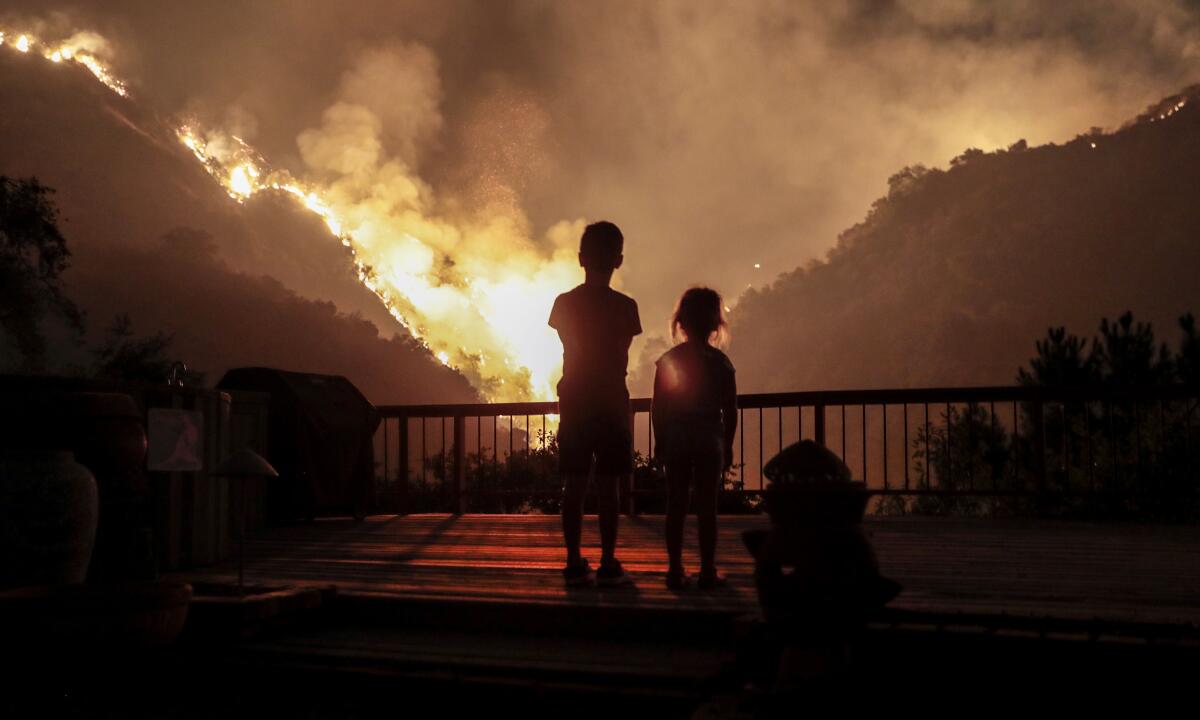
That would be a radical departure from the past decade, when even modest efforts to boost prevention funding have stumbled.
In 2011, the Legislature imposed an annual fee on homes in areas protected by Cal Fire. The assessment, which paid for a variety of department activities, including fire prevention and hazardous fuel reduction, proved so unpopular in rural counties that it was essentially killed six years later.
Lawmakers then turned to the state’s Greenhouse Gas Reduction Fund, funneling $200 million a year in cap-and-trade auction proceeds to community fire prevention grants and prescribed burning by Cal Fire crews.
Most of that evaporated early this year when the COVID-related economic downturn slashed industry demand for the program’s pollution allowances. Budget problems also killed the Newsom administration’s proposal for a November $4.75-billion climate resilience bond, which included $750 million for wildfire community protection and forest health.
“We know what is needed to do fire resilience,” said Jessica Morse, deputy secretary of the California Natural Resources Agency, which oversees Cal Fire. “We had laid out a plan … COVID and our budget crisis undermined those plans.”
Though cap-and-trade auction revenue has rebounded since May, she said “conversations are underway” to find a more stable funding source.
But she dismissed the idea of a new state department devoted to fire-hazard reduction. “I don’t think new bureaucracy is the solution,” Morse said. “We have identified what the solutions are. We need to be able to invest in them consistently at scale.”
She cited an August agreement between the state and the U.S. Forest Service in which they each committed to annually treating 500,000 acres of California forest and rangelands by 2025 with a variety of fuel-reduction practices, including prescribed fire, thinning overgrown woodlands, timber harvest and grazing.
Yet this memorandum of understanding is non-binding and includes neither money nor staffing.
Moreover, the state’s claim that it is already well on its way to meeting its commitment does not withstand close scrutiny.
Of the nearly 400,000 acres the resources agency says were treated in the last fiscal year, work by Cal Fire crews constituted only 55,000 acres — and just half of that was prescribed fire. Community grant projects, such as fuel break construction, represented another 35,000 acres.
The rest, some 300,000 acres, largely consisted of work by private landowners, including 115,000 acres of commercial timber harvest, as well as 114,000 acres of dead-tree removal that may never have been completed.
Landowners can cut down dead, dying and drought-killed trees under a program that exempts them from having to file a costly timber harvesting plan with Cal Fire. They apply to remove the trees on certain acreage.
But there is no requirement that they actually do all the work, nor does the state check to see if they have, said Helge Eng, Cal Fire’s deputy director of forestry.
The logging also doesn’t necessarily remove the small growth and dead material on the forest floor that helps fuel more intense wildfires.
“Generously, I’d say half of those acres are probably effective fuels reduction,” UC Berkeley forestry specialist Bill Stewart said of the roughly 300,000 acres of timberlands the state touted as treated in fiscal year 2019-20.
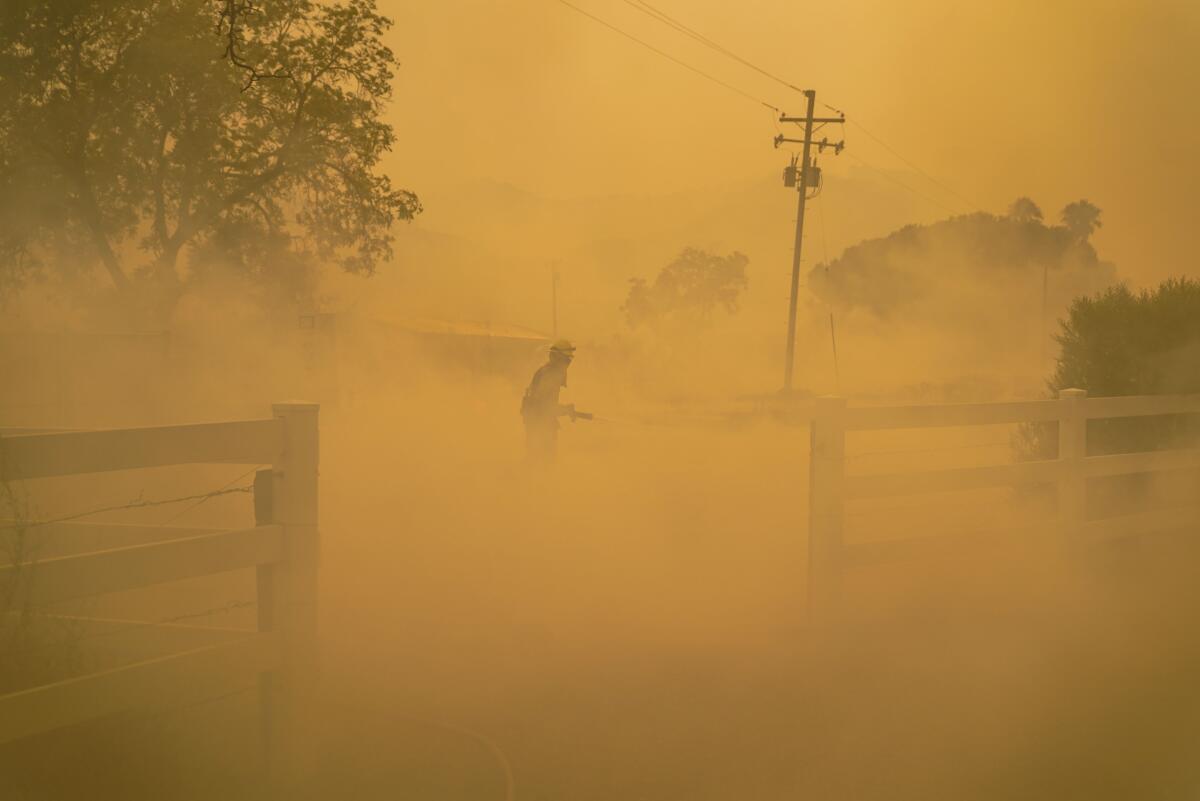
He also questioned the focus on timberlands, given that much of what has burned in California’s big, destructive wildfires isn’t forest. It’s grassland, oak woodland and shrubland.
The first two landscapes are in need of prescribed fire, not logging. The third is unsuited to fuel reduction. If cleared or burned too often, chaparral — or brush as Cal Fire calls it — turns to invasive grass that ignites readily and feeds fast-moving flames.
Keith Gilless, chair of the state Board of Forestry and Fire Protection, defended the state’s treatment numbers. “I don’t feel that this is an attempt to claim more progress towards an elusive goal than we are actually making,” he said. “I do believe that the activities … move us in the right direction.
“Are they in aggregate what we should be doing to allow us to reduce fire risk and reintroduce fire on the landscape successfully? No, we are not doing enough acres,” Gilless acknowledged. He added that the state is looking for ways to ease barriers to controlled burning, including air quality concerns and liability for escaped fires on private land.
The Forest Service in California also devotes most of its money and effort to firefighting rather than hazard reduction on the nearly 21 million acres of federal wildlands it manages in the state.
In the last fiscal year, the agency conducted controlled burns on just 16,742 of those acres, according to the regional office. Between 2010 and 2017 — the last year for which data was available — it used thinning projects or commercial timber sales to reduce forest fuels on an annual average of 103,000 acres.
Barnie Gyant, who until recently served as deputy regional forester, blamed the low numbers on a familiar litany: A shortage of money and staff to complete projects; public complaints about smoke from controlled burns; and the lack of a commercial market for the small trees that crowd many national forests.
“I’m always hoping there is more money,” he said, “but the reality is, that depends on Congress and the other needs that exist in the country for all the other programs.”
“Fire is the key, natural ecological process that outdated policies have removed.”
— Patrick Gonzalez
In September, as fires raged up and down the West Coast, UC Berkeley forest ecologist and climate change scientist Patrick Gonzalez proposed a major shift in federal wildfire policy to break what he called a vicious cycle: Bigger, more intense wildfires boost carbon emissions, which accelerate climate change, which promotes more intense fires.
Washington, he wrote on a science policy website, should redirect federal firefighting funding — which nationally topped $3 billion in 2018 — to fire-use.
Prescribed burns and managing moderate lightning fires in remote areas are the cheapest and most effective ways to tackle the West’s catastrophic fire problem, Gonzalez said.
“Fire is the key, natural ecological process that outdated policies have removed. Only the restoration of natural fire can completely address the root causes of the problem.”


